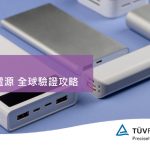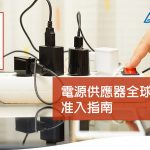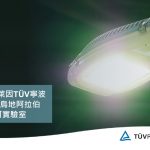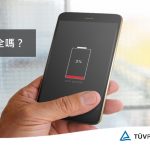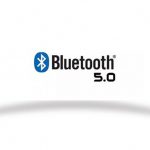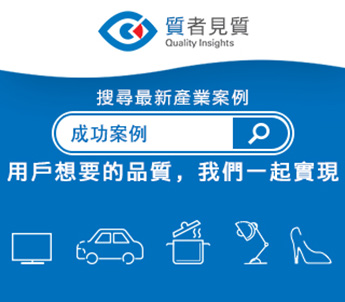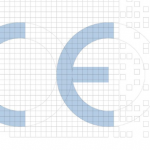Compliance methods for USB type-C Radio Equipment – DIRECTIVE 2014/53/EU amendment of Official Journal of the European Union on 12 July 2022

THE EUROPEAN PARLIAMENT AND OF THE COUNCIL published DIRECTIVE (EU) 2022/2380 amending from Directive 2014/53/EU on 23 November 2022.
A total of 13 USB type-C radio equipment products shall comply with DIRECTIVE (EU) 2022/2380, if a product has owned any USB type-C port, the product shall compliance with the following standards:
• USB type-C plug: EN IEC 62680-1-3:2022 “Universal serial bus interfaces for data and power – Part 1-3: Common components – USB Type-C® cable and connector specification”
• USB PD charging protocol:EN IEC 62680-1-2:2022 “Universal serial bus interfaces for data and power – Part 1-2: Common components – USB Power Delivery specification”, the maximum available power is 240W.
A brief introduction of EN IEC 62680-1-2:2022 and EN IEC 62680-1-3:2022 and compliance test methods are shown as below:
IEC 62680-1-2 introduction:
1. The communication between Source (or Provider) and Sink (or Consumer) are depending on their CC pins, to decide and allocate the output rating of the USB type-C port.
2. Hence, the CC pins and VBUS are measured and analyzed for protocol safeguard of USB Power delivery.
3. Many test items are to analyze and check that the QUERYs and ACKs are satisfied standard procedures.
4. The signals of CC pins are encoding and decoding with BMC (Biphase Mark Coding):

5. Structure of USB Power Delivery Communication

6. USB Power Delivery charging modes:
(1) Fixed Voltage Power Ranges:
| Power Range | Available Current and
Voltages |
PDP Range | Notes |
| Standard Power Range (SPR) | 3A: 5V, 9V, 15V, 20V
5A1: 20V |
15 – 60W
>60 – 100W |
|
| Extended Power Range
(EPR) |
3A: 5V, 9V, 15V,
20V 5A2: 20V 5A2: 28V, 36V, 48V |
15 – 60W
>60 – 100W >100 – 240W |
Requires entry into
EPR Mode. |
| 1 Requires 5A cable.
2 Requires EPR cable. |
|||
(2) Programmable Power Supply (PPS):
| Available
Current |
Prog | Min
Voltage |
Max
Voltage |
PDP Range |
| 3A | 5V Prog | 3.3V | 5.9V | 15– 60W |
| 9V Prog | 3.3V | 11V | ||
| 15V Prog | 3.3V | 16V | ||
| 20V Prog | 3.3V | 21V | ||
| 5A1 | 20V Prog | 3.3V | 21V | 60 – 100W |
| 1 Requires 5A cable. | ||||
(3) ERP Adjustable Voltage Supply (AVS)
| PDP | Minimum Voltage (V) | Maximum Voltage (V) |
| 100…140W | 15 | 28 |
| >140…180W | 15 | 36 |
| >180…240W | 15 | 48 |
IEC 62680-1-2 compliance test methods:
1. USB Power Delivery Compliance Test: To test the standard Query-and-Ack procedures of UUTs (Unit under test) according to VIF (Vendor Info File) parameters.

2. Functional Test: There are a variety of different operational connections to be made with USB Type-C connectors on end-user products, there is a variety of electrical and timing requirements that constrain their interaction and lead to functional connections.
3. Source Power test: To apply test for Vbus source-capable USB Type-C connector ports. The test definitions cover droop/drop, connect, disconnect, and USB PD voltage transitions, current transitions and over current protection.
IEC 62680-1-3 introduction:
1. USB type-C pin define:

2. The standard USB type-C connecters:
a. USB Full-Featured Type-C receptacle: 24 contacts
b. USB 2.0 Type-C receptacle: 16 contacts
c. USB Full-Featured Type-C plug: 22 or 24 contacts
d. USB 2.0 Type-C plug: 12, 14 or 16 contacts
e. USB Type-C Power-Only plug: 9 contacts
3. Types of USB type-C cable:
a. USB Full-Featured Type-C Standard Cable
b. USB 2.0 Type-C Cable

c. USB Type-C to USB 3.1 Standard-A Cable

d. USB Type-C to USB 2.0 Standard-A Cable

e. USB Type-C to USB 3.1 Standard-B Cable

f. USB Type-C to USB 2.0 Standard-B Cable

g. USB Type-C to USB 2.0 Mini-B Cable

h. USB Type-C to USB 3.1 Micro-B Cable

i. USB Type-C to USB 2.0 Micro-B Cable

j. USB Type-C to USB 3.1 Standard-A Receptacle Adapter

k. USB Type-C to USB 2.0 Micro-B Receptacle Adapter

IEC 62680-1-3 compliance test methods:
1. The test items are including USB Type-C receptacle, plug and passive cable assemblies:
a. Type-C receptacle
b. Type-C plug
c. Type-C to Type-C cable assemblies
d. Type-C to legacy USB cable assemblies
e. Type-C to legacy USB adapter assemblies
2. Some test concepts refer to EIA-364 series (electrical connectors and sockets), a brief introduce is described as below:
a. USB Type-C Connector DC Electrical
b. USB Type-C Connector Mechanical and Environmental
c. USB Type-C Cable Assembly Mechanical and Voltage Drop
d. USB Type-C to Type-C Cable Assembly Signal Integrity
e. USB Type-C to Legacy USB Cable Assembly Signal Integrity
f. USB Type-C to Legacy USB Adapter Assembly Signal Integrity
g. USB Type-C Cable Assembly Shielding Effectiveness
h. Special requirements for legacy USB plugs and receptacles used in Type-C to legacy USB cable assemblies and Type-C to legacy USB adapter assemblies
i. USB Type-C Connector High-Speed Signal Integrity
Conclusion:
TÜV Rheinland has been committed to providing safe and sustainable solutions, striving to become a leader in low-carbon enterprises.
The USB Power Delivery (PD) standardization policy enables variable USB Type-C chargers on the market to be interchangeable, reducing global resource waste.
According to DIRECTIVE (EU) 2022/2380, the European Union will start phase 1 of mandatory compliance for 12 radio-equipment products with EN IEC 62680-1-2 and EN IEC 62680-1-3 on December 28, 2024.
TÜV Rheinland is ready to provide these compliance test services for you, so that your certified products can meet the new technical criteria and be sold worldwide successfully.
Contact us :
| Mr. Max Wang | Mr. Dennis Wan | |
| TEL: | (02) 2172 1289 | (02) 2172 1233 |
| Email: | MaxKC.Wang@tuv.com | dennishw.wan@tuv.com |
熱門分享



